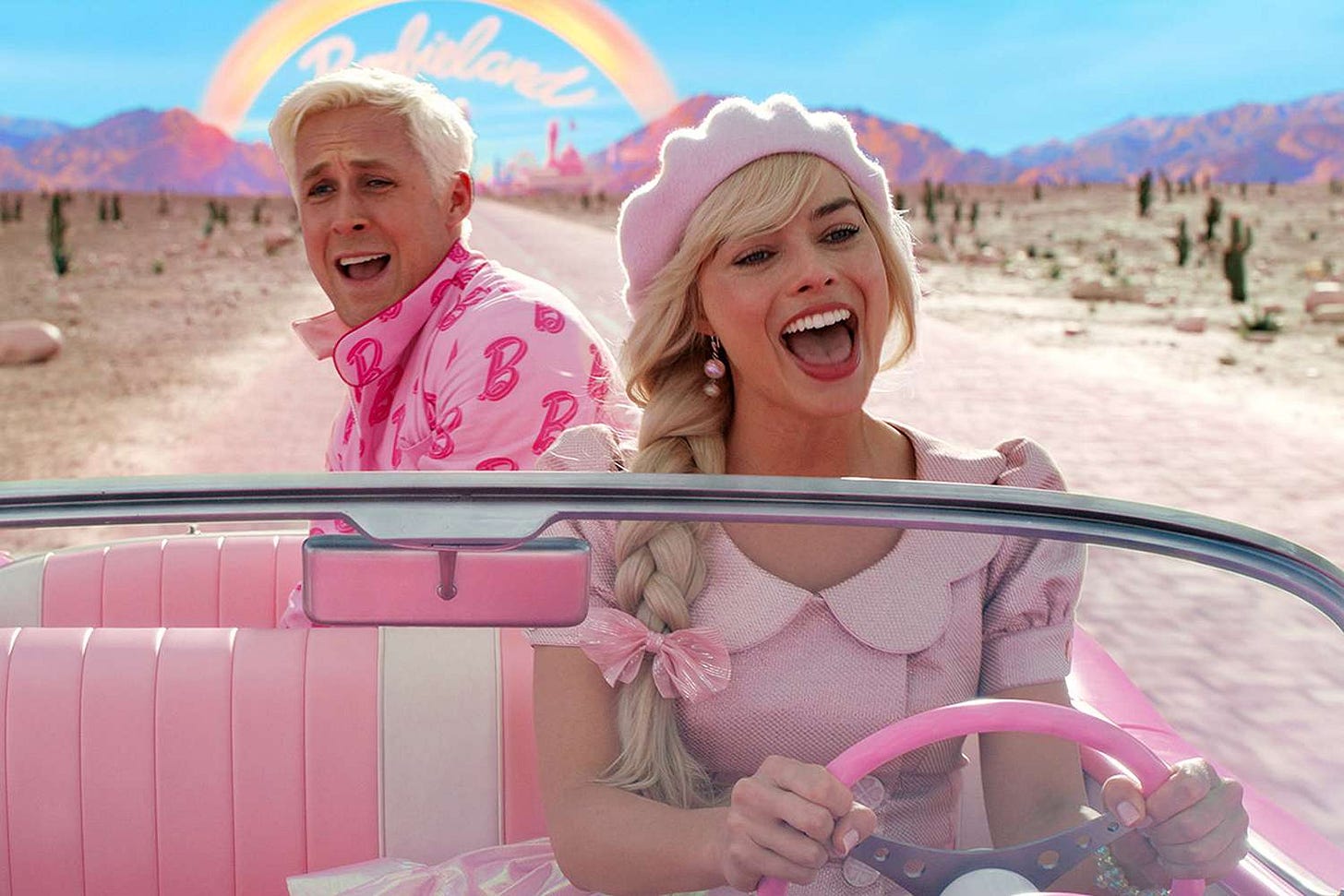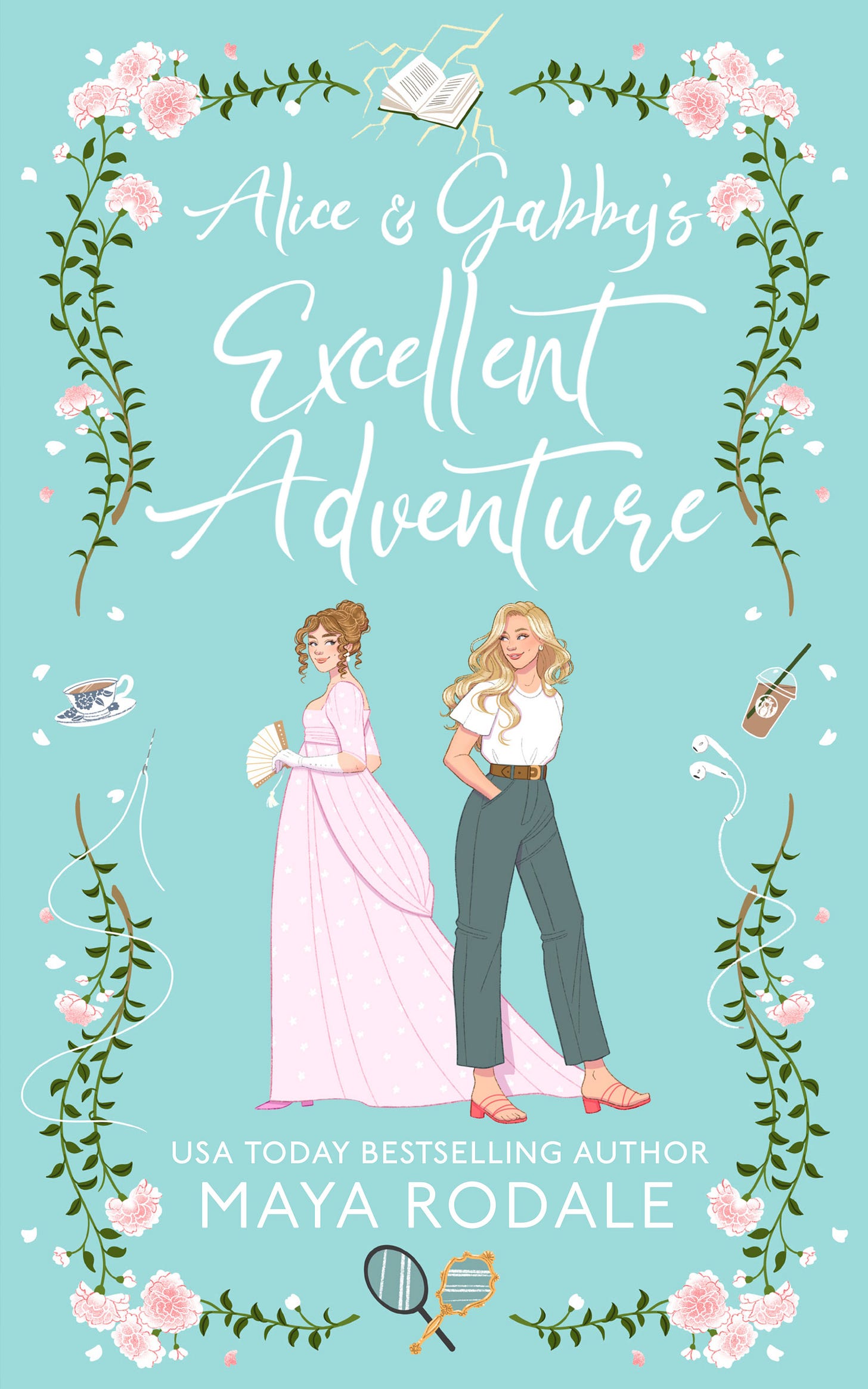What if we really just wanted to read and write about female friendship and women but the only way to do it was to put a duke in it and call it a romance novel? If women want to explore their relationships with each other, what better way to get mass approval for it than to make sure a man is involved?
I am not saying that the romance genre is not about romantic, sexual love between two people—it is, obvs, and I hope it shall continue to be so, complete with butterflies, sparks, good grovels, grand declaration and swoon worthy kisses and all the sexy times. But one thing romance novels don’t get enough credit for is their really stellar portrayals of female friendship. Stellar in that they are layered, nuanced, genuine, complicated and dedicated. And it’s a relationship that maybe able to stand alone, no duke (or Ken) necessary.
This has been a lingering thought in my brain for years now, but I saw the Barbie movie twice so now we’re going to talk about it.
Hi Eloise! Hi Penelope!
In romance, when I think about female friendship on the page I think about Penelope Featherington and Eloise Bridgerton. They are besties, but it gets a little fraught in book six when Penelope of all people has gotten married and Eloise is still on the shelf and at odds with herself. It’s very clear that no love is lost between the two, but the friendship dynamic has changed and that confounds how Eloise sees herself and experiences the world. It’s such a profoundly real moment that it’s stuck with me all these years.
Female friendships are everywhere in romance novels. Many a heroine has a friend or a sister who they are tight with. They have someone they can talk to about their lives, a person to provide a refuge (figuratively and sometimes literally), and the strength of this relationship means that the hero is choice, not a necessity.
Many of my own series have been linked by the female friendships—either my Writing Girls (women who write for a newspaper in Regency London) or my Wallflowers (besties from Finishing School) or even The Gilded Age Girl’s Club (powerful business women in Gilded Age New York). In my novels, these relationships did some really important work: they made the heroines people who existed beyond their love interest, they made sure the story passed the Bechdel test (are there two female characters with names who talked to each other about something other than a man?), and they provided, I think, a sense of comfort and playfulness even as the romantic relationship can get intense and complicated.
Romance, as we traditionally understand it, is only enhanced by these other friendships.
As I’m watching Bridgerton the show, I am of course 100% here for Penelope and Colin but the dynamic between Eloise and Penelope is even stronger on the show than in the book and I’m just as keen to see how their friendship plays out. In fact, I harbor a small hope that they will throw out the book (which is literally my favorite romance novel), and just focus on Penelope and Eloise.
Hi Barbie!
(Spoiler alerts in this section read at your own risk)
(But who reading this newsletter has not yet seen the Barbie movie?)
Barbie—the toy, the movie, the everything—is a riotous and unapologetic celebration of women. What surprised me about the movie (but it shouldn’t have) is how much it was about mothers and daughters.
What delighted me was how much it was about the Barbies’ friendship and camaraderie with each other and how uncomplicated it was. This wasn’t Mean Girls in Barbie Land; they were all happy for each other to win Nobel prizes and for President Barbie to be President. They were so happy and thrilled with their girl power world that it made Ken sad and lonely.
I’m thinking particularly of the scene where Ken asks to stay over and Barbie says, “No, it’s girl’s night.” Her prioritization of the Barbie bond leads to (causes?) his heartache that causes him to bring patriarchy to Barbie Land.
There is a line later in the movie where Barbie says, “I guess I don’t need to have girls’ night every night.” Her disappointment is palpable. Like, I don’t need to celebrate my birthday, I guess. I’m a romance writer—I’m always cheering for the couple to get together in the end but I felt a wave of sadness for Barbie in this moment. I didn’t want Barbie and Ken to get together because she didn’t want it. Her friendship with the other Barbies were the most enriching relationships and they were enough.
A few years ago, The Atlantic published an article that asked What if Friendship, Not Marriage, Was At the Center of Life? It is all about people who prioritize their friendships over their romantic relationships. It is basically the Barbies. And it’s a love story we don’t see very much of (yet?).
Hi Alice, Hi Gabby!
At some point in my writing career, I realized that female friendship is my “core story” which is the term for the story someone can’t stop writing over and over again. It’s there in the link between my Writing Girls or my Wallflowers. And it’s really obvious in my YA novel Alice and Gabby’s Excellent Adventure. It’s about two girls who switch bodies and centuries and then become besties. It’s like a female friendship rom com—a great example of which is the movie For a Good Time Call, which is an enemies-to-friends Rom Com, beat for beat.
When I started writing, Alice and Gabby were going to be stand alone romance novels, connected by their quirky friendship, as I always did. But as I was fast drafting their stories concurrently, I realized that wasn’t their story at all. In fact, I still distinctly remember writing and writing, coffee flowing, fingers flying across the keyboard when I realized…this is a friendship love story. This is about two people becoming their truest true selves through the course of their relationship with each other. It was a romance just…for friends.
Yes, there were boy love interests, but they were secondary. They were not the relationship that drove the transformation in Alice and Gabby’s life, they were the icing on the cake.
My parting thought
Is there a category for stories just about women’s relationships/friendships with each other? Is that just women’s fiction? Or do we need Dukes and Kens to make the stories work?







Very interesting! I think of Little Women -- although they are sisters -- and I also think about my own life, since I'm divorced and live alone. Where would I be without my female friends?
I’m so glad you touched on this. Realizing in my fifties how important female friends are I’ve made it a point to add friendships into my stories.
I have the unshakeable “Panther Mama’s” in “THE PERPETUAL”.
Experience and calm insight to a fellow mid-life woman. And a little ass-kicking. 💕